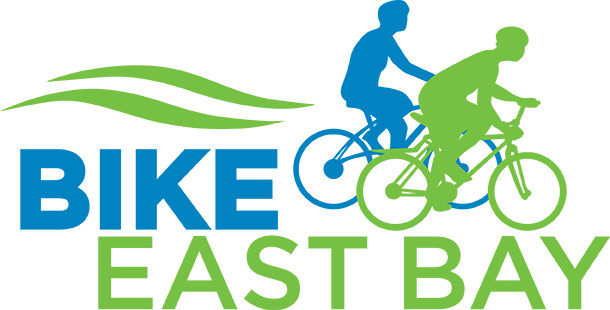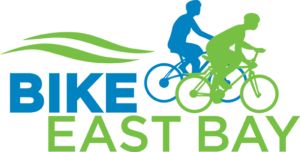dealing with gridlock
In slow or gridlocked traffic some bike riders take advantage of their small size to filter forward to the left or right of stopped cars. While legal (more info here), it can also be very dangerous if precautions are not taken.

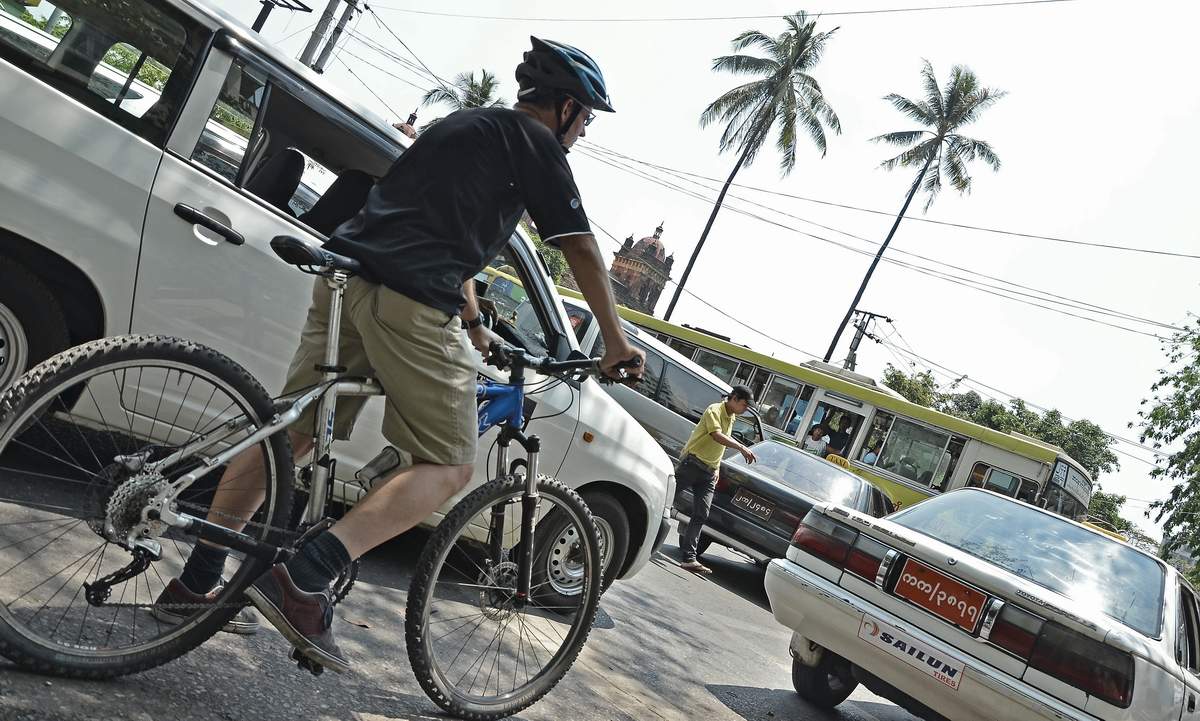
To protect your own safety and the safety of others we recommend the following:
 Most important: Do not pass to the right of buses, trucks, or other heavy vehicles at intersections!!! When passing heavy vehicles on the left still proceed with caution and room to maneuver. Some of the most serious collisions occur between people biking and people driving buses or trucks, due to the vehicle’s large blind spots and turning radius. When passing, don’t assume these drivers can see you.
Most important: Do not pass to the right of buses, trucks, or other heavy vehicles at intersections!!! When passing heavy vehicles on the left still proceed with caution and room to maneuver. Some of the most serious collisions occur between people biking and people driving buses or trucks, due to the vehicle’s large blind spots and turning radius. When passing, don’t assume these drivers can see you.
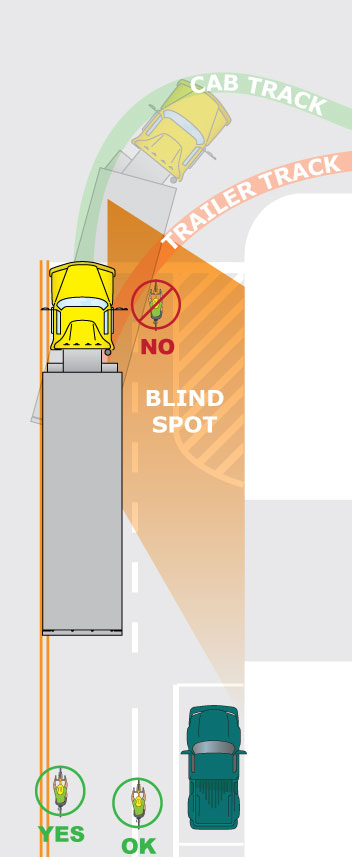
- Do not filter to the right of a car signaling a right turn, or to the left of a car signaling a left turn. However, do not assume that the turn signal means they are turning, and do not assume no turn signal means they are proceeding straight ahead.
- Filter to the right or between cars slowly (under 10mph) and with caution as these maneuvers leave you with little space to avoid a collision if someone in a car is to open their door or swerve suddenly. Keep your hands near your brakes so you can stop quickly in an emergency.
- Always signal before moving laterally (left or right) so other road users behind you can anticipate your movements.
- When approaching intersections or crosswalks proceed very carefully while checking both left and right for cross traffic and pedestrians which may be hidden from view by the cars on both sides. If filtering to the right make sure to anticipate and yield to any traffic that may be turning right at an intersection or driveway. Don’t assume that someone won’t be turning, even if they are not signaling a turn.
- Watch for potholes, debris, train tracks or other hazards in your path while filtering, as the tight space makes them harder to avoid. If you can not avoid a hazard in your path stand up on your pedals to let your knees absorb the bump and attempt to ride straight over it, not turning. Ride over a rail crossing perpindicular to the tracks to avoid getting your wheel stuck or losing traction.
- Try not to “leap frog”, or move ahead of traffic that will just be passing you again later. Doing so not only frustrates other road users who pass you repeatedly, it also sets up additional passing conflicts which would not have occurred if you hung back a bit.
- If there is not enough space to filter safely, then wait.
If you do not feel comfortable filtering between cars you can do the following instead:
- When approaching stopped or slow traffic first signal and then move over so that you are lined up with the road user in front of you, and not hanging to the right. This makes you more visible to traffic behind you, and discourages drivers from squeezing you into the right-side gutter or making a right turn across your path. Try leaving at least 6 feet of space between yourself and the car in front of you, however, so you still have room to maneuver and so that you don’t get a face full of exhaust fumes.
- Stay “singled-up” with the traffic in front of you until you are through an intersection, and then take the proper lane position once traffic is flowing smoothly again.
What if there is a bike lane on the right side?:
- The suggestions provided above apply whether or not there is a bike lane. California law allows you to leave a bike lane or right side of the road when (A) moving the speed of traffic or (B) approaching an intersection (more info and other bike lane exceptions here). This means when you are in dense, slow moving traffic you can take whatever road position is safest for you.
What do car drivers need to know?:
- A bike lane is a travel lane, just like all of the other ones on the street. This means it is illegal to make a right turn ACROSS a bike lane, and that you should instead merge INTO a bike lane before making a right turn, after yielding to any people on bikes already in that lane (it’s the law). One of the most common types of bike/car collisions is the “right hook”, where a driver turns to the right across the path of a bike rider going stright. Signaling, yielding, then merging into the bike lane, making your turn as close to the right curb as possible, makes it almost impossible for these collisions to occur.
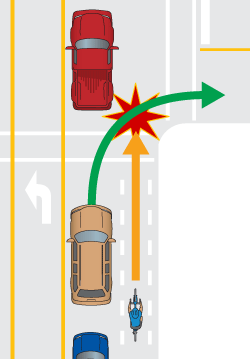
- Use your turn signal at least 100 feet before you make any turn or lateral movement, every time, even when just approaching a red light or turning into a driveway or parking spot. Doing so lets people behind you know what road position they should take around you to avoid conflicts. Don’t see anyone else on the road? Signal anyway, because it’s the bike riders you don’t see that you need to worry about the most.
- We suggest that people on bikes not “leap frog” by passing other road users who will likely just pass them again (although they are not legally prohibited from splitting lanes in California), and this suggestion is just as appropriate for drivers. There is no benefit in racing to get to the next red light sooner, so pass only when there is good reason and enough space to do so safely (minimum 3 feet between you and the bike rider). Try thinking “Would I pass this person if they were in a car, not on a bike?” If the answer is no then hang back.
